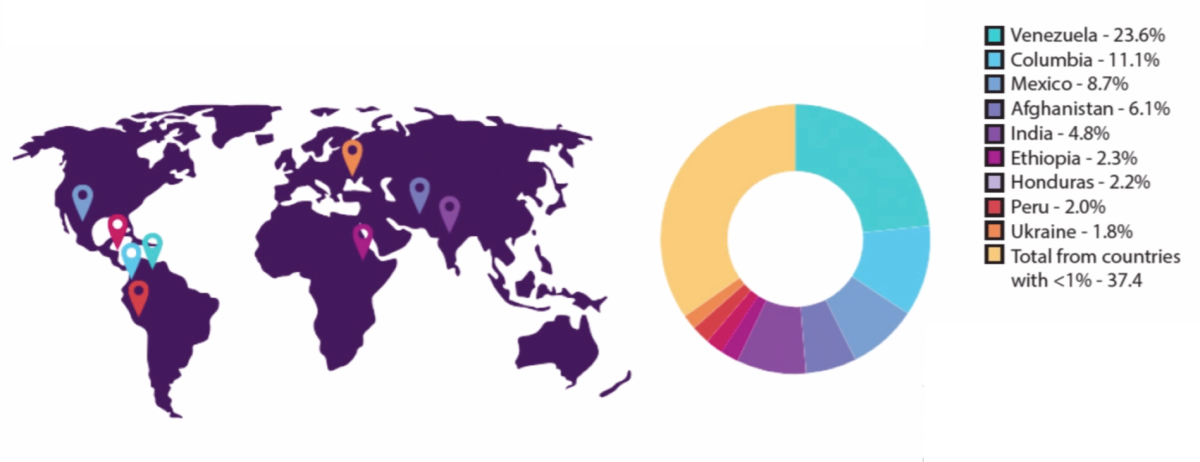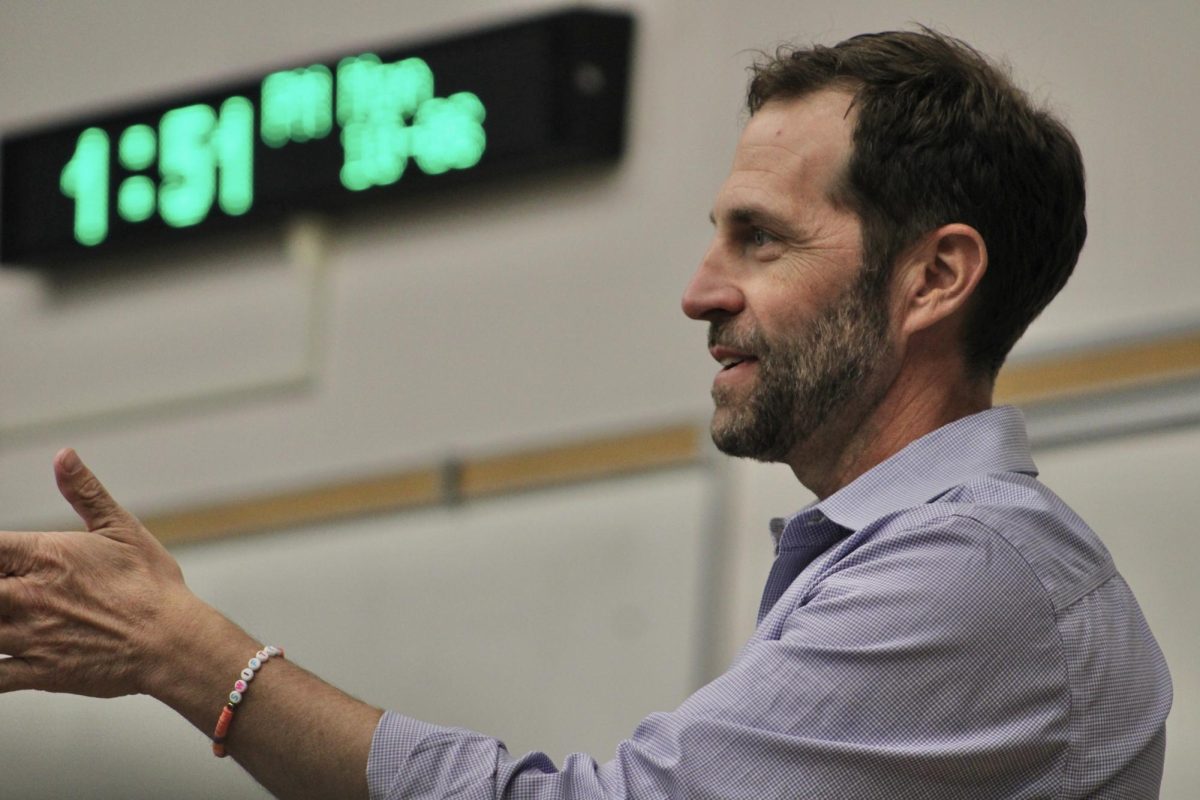“Coming here is like a break,” senior Claudia Naranjo Marcano said. “You can use your phone on the streets and they won’t get snatched, or you can wear your nice clothes and they won’t get stolen.”
Naranjo Marcano fled from Venezuela to the U.S eight years ago, and in recent years, immigration from the country has only increased. Venezuela has one of the largest external displacement crises in the world with over 7.7 million refugees and migrants as of August 2023.
Since Venezuela accounts for the largest share of global oil reserves, when oil prices declined in the mid-2010s, the Venezuelan economy crashed. This crisis was only exacerbated when the U.S imposed sanctions as a response to human rights abuses and corruption under the government of Venezuelan president Nicolás Maduro. The financial instability and government corruption led to a steady increase in crime rates in the mid 2010s.
As more Venezuelans became exhausted with economic struggle and anti-democratic governance, immigrants fled to the U.S for refuge and job opportunities, with 262,633 Venezuelans having crossed the U.S-Mexico border in just 2023.
While there have been fewer immigrants arriving in Denver since January, Colorado is still experiencing the flood of immigrants and continues to provide increasing support. The city’s nearly $90 million budget plan focuses on immigrant housing and aid for the rest of 2024. These accommodations are reflected in the education system as well.
The Cherry Creek School District (CCSD) is one of the largest school districts in Colorado, with 52,392 enrolled students. According to CCSD Data Analyst Dave Roybal, the number of immigrant students in CCSD has increased by 33% since last year, with 1728 immigrant students in 2024.
According to English Language Supports Program Head Tricia McRae, Creek is one of the top CCSD schools impacted by this influx of immigrants. To accommodate, Creek is expanding their English for Newcomers program, a class dedicated to teaching immigrant students English.
“We haven’t had the numbers in the past to have another [English for Newcomers] class,” English Language Supports Specialist Andrea Aldridge said. Creek added another period for English for Newcomers this year and plans to hire another ELS specialist for next year.
Some teachers also go out of their way to overcome the language barrier with newly immigrated students. Social Studies teacher Matthew Buddington has a version of some of his CP World Geography hand-out notes completely in Spanish.
“For teachers, we’re in a tough situation trying to navigate this new situation,” Buddington said. “My number one concern is trying to make those students feel welcomed and included in the class.”
Naranjo Macrano, who didn’t have that support when she immigrated eight years ago, heard about Buddington translating his notes while tutoring another Hispanic student.
“When I saw [Buddington’s notes], I was like ‘Wow, the time and effort to do that for your students is incredible,’” Naranjo Macrano said. “I mean, this is new for them. This is new for everybody.”
When Naranjo Macrano immigrated to the U.S in 2016, there was less organized support in place. Her elementary school in Florida didn’t provide any resources to ease the transition and the potential language barrier.
“I would cry every single night because my mom and I would have to Google Translate every single page and then read it in Spanish,” Naranjo Macrano said. “What was the hardest wasn’t even the fact that I was lacking resources, it was just the fact that I was the only one like me.”
Naranjo Macrano is a member of Latinos Unidos, which not only supports native Spanish-speaking students academically but also provides a community for newcomers to meet people with similar backgrounds.
Antonella Salih is a freshman at Creek who immigrated from Venezuela in December 2023. Initially, she was intimidated as a new student but Latinos Unidos quickly welcomed her.
“It’s a big help because you can get together with Latino people and talk with them and socialize,” Salih said in Spanish. “Being in Latinos Unidos, even just for a moment, is like being in your country.”









Bruce | May 16, 2024 at 2:54 AM
Question…
I’m fairly certain State of Colorado and Colorado Department of Education differentiate between ‘migrants,’ and ‘immigrants,’ for data collection and reporting purposes — the chart provided shows info on immigrant arrival from around the world.
Chalkbeat Colorado reported as of May 2nd that Cherry Creek enrolled a bit over 500 Venezuelan migrants.
How does the number you’re reporting compare to past historical figures?
How does the district define ‘immigrant,’ versus ‘migrant’ for reporting purposes?
I’d do the search myself but meh.
Also, teachers providing translated class note materials to new English learners isn’t going ‘above and beyond,’ it’s a requirement ensuring in law (Title 3) and has been a district wide policy for years as a result.
Comments like that only further inflates Creek’s bubble and insulates your community from reality. As if teachers at schools just a few miles to the north and east of Creek haven’t managed this successfully for decades.
john | May 20, 2024 at 11:10 PM
A Chalkbeat Colorado article published on March 15 wrote about the passing of a bill giving extra funding to CO school districts who have enrolled “migrant students.” However, the bill does not use the term migrant or immigrant anywhere, and instead uses the phrase “new arrival students,” which the Chalkbeat article says the bill defines as “students who moved to the United States less than a year ago, are not proficient in English, and are attending a U.S. school for the first time.”
Based on that, it seems that even if the State of Colorado or the Colorado Board of Education have different definitions of “migrant” and “immigrant” for other purposes, these differences are not considered important enough for a state bill on new arrival students to delineate. Therefore, this USJ article probably doesn’t need to differentiate between migrants and immigrants either, as they are put in the same category as far as the education of new arrival students is considered.